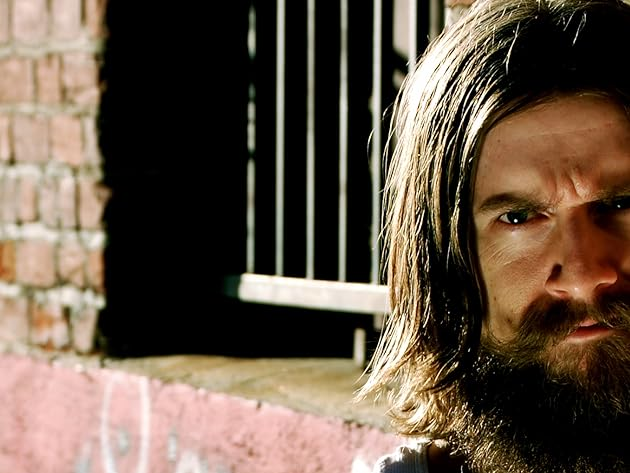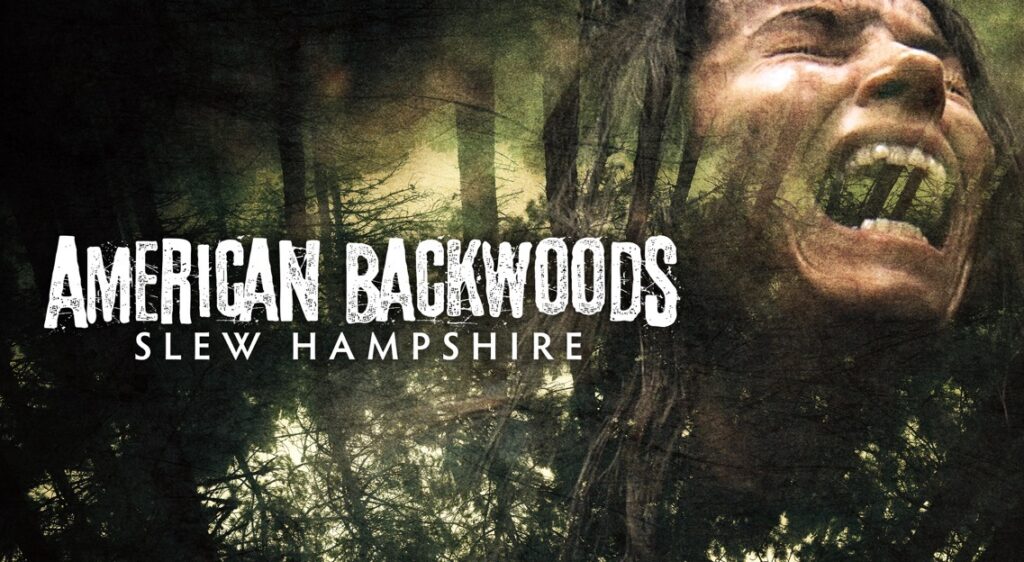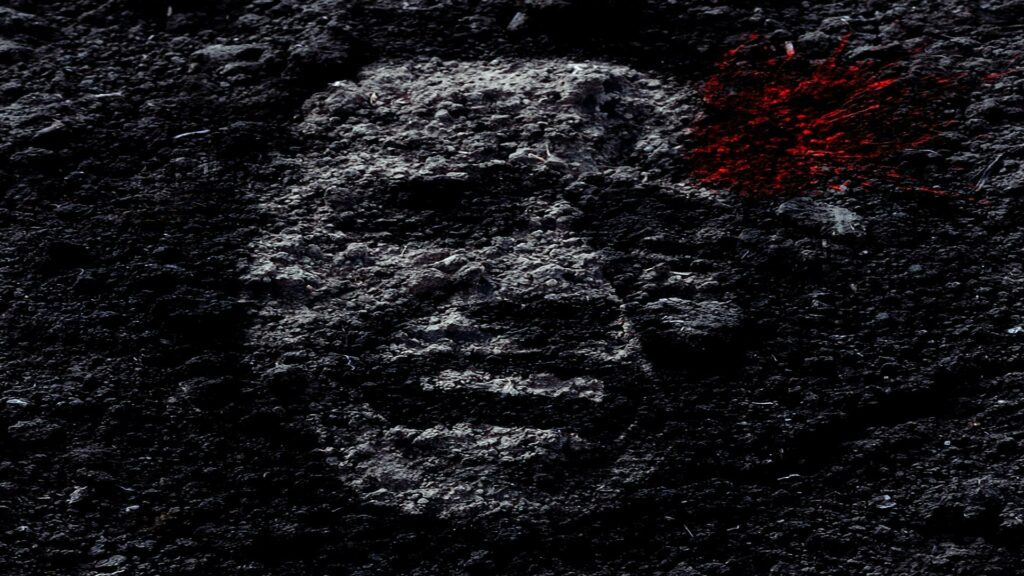
Flood Reed
Director
The backwoods horror film holds a certain grimy, enduring allure. It promises terror far from the streetlights and reassuring structures of civilization, in places where the rules seem suspended and primal fears take root. It’s a fertile ground often tilled by independent filmmakers, sometimes yielding surprisingly potent harvests of dread, other times resulting in ventures that simply get lost in the cinematic wilderness. Flood Reed’s 2015 effort, American Backwoods: Slew Hampshire, stands as a particularly divisive entry into this blood-soaked subgenre, a film born from micro-budget constraints and a sensibility that seems determined to provoke extreme reactions.
Helmed by Reed – who wears the hats of writer, director, and actor – and produced by Gluefactory Features on an estimated shoestring budget of around $300,000 , Slew Hampshire arrives with a reputation that precedes it. It’s a film greeted by an abysmal IMDb user score (a stark 3.6/10) , yet simultaneously championed by pockets of fervent admirers within the hardcore horror and gorehound communities. This stark polarization isn’t merely statistical noise; it signals a film operating on a different frequency, one likely calibrated to repel mainstream sensibilities while resonating deeply with those attuned to its specific brand of unapologetic, boundary-pushing extremity. This isn’t a casual watch; it’s a descent into what its own synopsis calls a “Darwinian gore fest” , a journey into questionable taste and visceral shocks that demands a certain fortitude, or perhaps a specific appetite, from its audience.
The Doomed Rite of Passage: Plotting a Course Through Chaos
The premise, on paper, treads familiar ground. Set in the autumn of 1994, the story follows four lifelong friends – Bro (Dayo Okeniyi), Buddy (Shawn Thomas), Dude-Guy (Tyler Rice), and Kid (Jeremy Isabella) – embarking on a final weekend trip. It’s framed as a “rite of passage” , a last hurrah of debauchery before the responsibilities of adulthood presumably close in. Their destination is vaguely north, into the titular backwoods of New Hampshire (though the film itself was shot in Maine ), an area already shadowed by the recent memory of a brutal mass slaughter that occurred just months earlier, in June.
Predictably, their journey goes horrifically awry. A wrong turn, perhaps a vehicle mishap – the catalyst is less important than the consequence: finding themselves stranded and vulnerable. Their descent into nightmare involves encounters with a sinister hunting party, a bloodthirsty cannibalistic tribe, and hints of a mythical beast lurking in the woods. The narrative focuses on their struggle for survival as their decisions, often poor ones, lead them deeper into peril, aligning with a character-action focus often seen in the genre.
However, the execution of this familiar setup is where opinions sharply diverge. Numerous audience reviews criticize the plot’s coherence, describing it as confusing, nonsensical, and hard to follow, with a setup that drags before the horror truly ignites. This contrasts starkly with positive takes that celebrate the film’s unpredictability and “insane” direction, suggesting the chaos is part of the appeal. Phrases like “a touch uneven” pacing or “narrative shortcomings” seem applicable here. The conflicting reports raise a crucial question: Is the narrative confusion a deliberate attempt to create a disorienting, nightmarish atmosphere mirroring the characters’ experience, fueled by Reed’s unconventional artistic background? Or is it simply a byproduct of the severe budget limitations and potential inexperience manifesting as execution flaws? The film walks a fine line between avant-garde ambition and amateurish fumbling, leaving the viewer to decide whether the chaos is calculated or merely careless.
Indie Vision or Grindhouse Mess? Flood Reed Behind the Camera
Understanding Slew Hampshire requires acknowledging the unique figure behind it. Flood Reed’s background reads less like a traditional filmmaker’s CV and more like a collection of bizarre adventures: circus performer, controversially banned amateur biathlete, former bicep model, underground game show host, and a finalist in HBO’s “Project Greenlight”. This eclectic history perhaps informs the film’s widely described “insane,” “unique,” and “messed up” but also “creative” and “genius” nature, as noted by some viewers. The film feels less like a polished product and more like a raw, perhaps unfiltered, projection of a singular, unconventional artistic sensibility.
Visually, the film reflects its micro-budget origins. While some audience members praise the “great production values” for an indie film and find the cinematography “visually clear” , others lambast the “bad camera work” and particularly poor lighting in night scenes, making them difficult to discern. One reviewer even felt the film looked cheaper than its reported $300,000 budget. Filmed in a standard 1.78:1 aspect ratio , the movie’s aesthetic seems caught between competent low-budget execution and moments where the constraints become glaringly apparent.
Where the film undeniably makes its mark, for better or worse, is its commitment to gore. This isn’t merely an element; it appears to be the film’s raison d’être. It famously earned Rue Morgue Magazine’s “Goriest Scene of the Year” award , and positive reviews consistently highlight the “extremely brutal practical gore effects”. For its target audience, the promise of “copious amounts of violent carnage” is the main draw. The sheer volume and intensity of the splatter suggest a deliberate prioritization. In the landscape of low-budget horror where standing out is crucial, focusing resources and creative energy on delivering unforgettable, extreme gore seems a calculated strategy, even if it comes at the expense of narrative polish or character depth – elements often cited as lacking. The sound design receives mixed, though less prominent, commentary: overall quality is deemed good by one account, but the musical score is sometimes criticized for overpowering dialogue.

The Boys (and Girls) of Summer: Performance Under Duress
The unfortunate protagonists thrust into this meat grinder are primarily the four friends: Dayo Okeniyi as Bro, Shawn Thomas as Buddy, Tyler Rice as Dude-Guy, and Jeremy Isabella as Kid. Okeniyi, notably, went on to more recognizable roles in projects like The Hunger Games, Terminator: Genisys, and NBC’s Shades of Blue. Director Flood Reed also steps in front of the camera as the hillbilly character Bags, while female characters, including Claire Dodin as Stockholm and Gaya Verneuil as Holly Ann, appear later in the narrative.
The quality of the acting is, like most aspects of Slew Hampshire, subject to wildly conflicting opinions. Detractors label the performances “horrible,” “poorly acted,” and lament a lack of emotional depth, with Okeniyi’s Bro specifically called out for insufficient emotion. Yet, other viewers found the cast “solid and convincing,” singling out Okeniyi as “excellent,” Rice as “extremely funny” for his portrayal of Dude-Guy, and Reed’s turn as Bags memorable. One positive review even commended the film for giving most characters enough backstory to feel like people rather than simple slaughter fodder.
Assessing the performances requires considering the film’s challenging tonal tightrope walk. It attempts to blend extreme, stomach-churning violence with moments of dark, absurd humor. Actors delivering “insane” dialogue or reacting to graphic dismemberment within this specific, non-naturalistic framework might appear “bad” or “emotionless” to viewers expecting realism. However, to those who embrace the film’s over-the-top, potentially satirical, grindhouse sensibility, the same performances might register as perfectly pitched – funny, convincing, or suitably unhinged. The perceived success or failure of the acting seems inextricably linked to the viewer’s acceptance of the film’s peculiar, often jarring, tone. The dynamic between the four friends, meant to be “lifelong,” is also crucial, though its believability under duress isn’t consistently commented on. The unusual choice to sideline female characters for a large portion of the runtime, noted by one reviewer , might also affect audience engagement and identification.
Navigating the Narrative: Gore, Gaffes, and Genre Tropes
Slew Hampshire readily embraces the tropes of backwoods horror: cannibalistic families, predatory hunters, the obligatory creepy gas station encounter, and hints of compromised law enforcement figure into the bloody tapestry. Its attempt to mix this horror with comedy yields divisive results. Is it effective, pitch-black humor, or does it land awkwardly? One viewer felt a sense of the filmmakers “winking at you” even amidst the most disgusting sequences, suggesting an intentional, albeit potentially alienating, comedic undercurrent.
Beyond the visceral thrills, thematic depth seems limited. One could perhaps read into it commentary on the dark side of masculine rites of passage (given the initial all-male focus ), the fragility of civilization, or simply the Darwinian struggle for survival. However, the film appears far more invested in delivering exploitation and shock value than in nuanced social commentary. Comparisons drawn by viewers to established genre benchmarks like The Hills Have Eyes, The Texas Chain Saw Massacre, and Wrong Turn place it within a clear lineage, but also raise questions about its originality. Does Slew Hampshire innovate within these familiar structures, or does it primarily function as an extreme imitation?
Slew Hampshire’s Legacy: Cult Hit or Backwoods Bungle?
The film’s reception tells a story of niche existence. The low IMDb score reflects widespread disapproval or misunderstanding among general audiences. Tellingly, there appears to be no aggregate score on Rotten Tomatoes, suggesting a lack of reviews from recognized mainstream critics. Similarly, box office data is non-existent, which is typical for micro-budget independent films released directly to home markets.
Its legacy, therefore, lies not in broad acclaim but in its appeal to a very specific demographic: enthusiasts of extreme gore, unapologetic indie horror, and films that revel in absurdity and dark humor. Positive feedback originates primarily from horror-focused websites and audience members identifying as genre fans. The Rue Morgue award and coverage on sites like Dread Central and Nerdly signify recognition within this dedicated community.
The film achieved distribution across various VOD platforms (Google Play, Amazon Instant Video, iTunes, Tubi etc.) and on DVD. For a film made for approximately $300,000 , operating entirely outside the studio system and lacking traditional markers of success, achieving this level of visibility and distribution, coupled with generating passionate (albeit polarized) discussion within its target niche, constitutes a form of success in itself. It found its audience, however small and specific that audience may be.
Conclusion: Surviving Slew Hampshire
American Backwoods: Slew Hampshire is an exercise in extremity, a micro-budget horror flick seemingly designed to repel as many viewers as it attracts. Its core identity is built on unapologetically brutal, practical gore effects, delivered with a side of bizarre, dark humor and a narrative that often prioritizes shock over coherence. For hardcore gorehounds and fans of truly “out there” independent horror, Flood Reed’s unique, arguably “insane” vision and the film’s relentless carnage might offer a memorable, if punishing, experience. The performances, particularly from Dayo Okeniyi and Tyler Rice, have been lauded by those who connect with the film’s specific wavelength.
American Backwoods: Slew Hampshire is an exercise in extremity, a micro-budget horror flick seemingly designed to repel as many viewers as it attracts. Its core identity is built on unapologetically brutal, practical gore effects, delivered with a side of bizarre, dark humor and a narrative that often prioritizes shock over coherence. For hardcore gorehounds and fans of truly “out there” independent horror, Flood Reed’s unique, arguably “insane” vision and the film’s relentless carnage might offer a memorable, if punishing, experience. The performances, particularly from Dayo Okeniyi and Tyler Rice, have been lauded by those who connect with the film’s specific wavelength.
However, for viewers seeking polished storytelling, consistent tone, strong character development, or even discernible nighttime visuals, the film is likely to be an exercise in frustration. Its low-budget limitations are frequently apparent, the narrative can be genuinely difficult to follow, and the blend of humor and horror will undoubtedly alienate many. Slew Hampshire isn’t a hidden gem for the masses; it’s a barbed offering for a select few. Approach with extreme caution, or perhaps, morbid curiosity.
Rating: 4/10
Film Fact Sheet
| Feature | Detail |
|---|---|
| Director | Flood Reed |
| Year | 2015 |
| Genre | Horror, Thriller, Drama |
| Main Cast | Dayo Okeniyi, Shawn Thomas, Tyler Rice, Jeremy Isabella, Flood Reed |
| IMDb Rating | 3.6/10 (as of review publication date) |
| Estimated Budget | ~$300,000 |
| Production Co. | Gluefactory Features |
| Distribution | VOD, DVD (No Box Office Data Available) |
| Runtime | 1h 43min (103 minutes) |
| Country | United States |
| Filming Location | Maine, USA |



